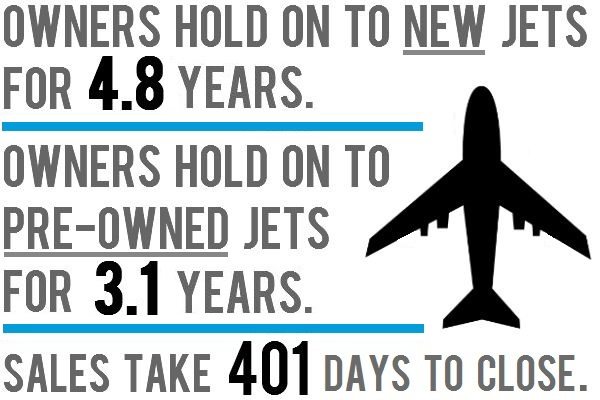Analysing the numbers that make the business jet market tick

New data from JETNET says pre-owned business jet transactions are taking 401 days to close.
The global business jet fleet is increasing, but owners are holding on to aircraft for longer and sales are dragging.
The business jet market is a bit like baseball. Aside from the game itself, there are thousands of numbers that you can look at and argue about. There are always interesting snippets worth examining.
In 2005, business jet owners on average held onto their new jet for 3.6 years. Now, according to analysis of JETNET data by Chase & Associates, that figure is 4.8 years. The same has happened for pre-owned aircraft, which have moved from 2.1 years to 3.1 years. This makes sense as there are a lot more aircraft for sale.
It is worth remembering that in 2008 the fleet of aircraft on the market went from 1,635 aircraft to 2,608. So even if owners want to sell jets, they are facing more competition. This is making the sales process drag on longer, with JETNET estimating that it now takes 401 days on average to sell an aircraft.
However, if you examine JETNET’s figures – which are consistent for all sizes and makes of aircraft – it is worth noting that the average time that an owner held onto an aircraft also rose between 2005 and 2008 as manufacturer backlogs grew. In 2008, owners were typically holding onto to new jets for 4.5 years, so perhaps the outlier is 2005.
It is also worth examining the percentage of aircraft for sale. Amstat says that 12.7 per cent of the global business jet fleet is listed for sale, which is the same as the 20 year average. JETNET believes the for-sale percentage is higher (13.3 per cent, to be precise), but it is worth remembering that the total fleet has grown as aircraft manufacturers continue to deliver aircraft (even though this is the worst ever downturn, the fleet has still grown by 3,000 since 2008). However, JETNET says the total number of aircraft for sale is 2,572, so only down by 36 jets from the 2008 peak.
So what does this all mean? Don’t ask me, I am a cricket fan still recovering from England being humiliated by Australia in the first test of the Ashes.









